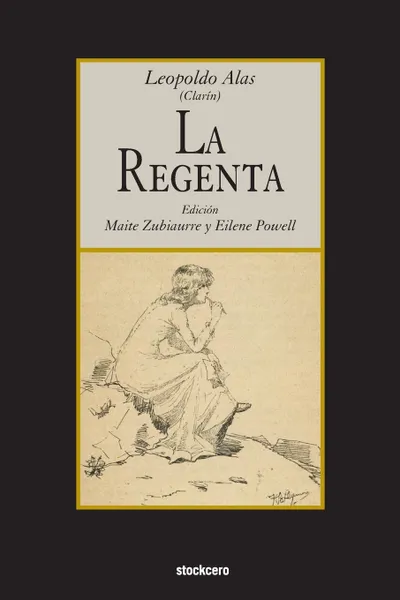La Regenta
📘 La Regenta, by Leopoldo Alas (Clarin), is considered a (if not the) great masterpiece of Spanish Realist and Naturalist fiction, comparable only to Benito Perez Galdos' Fortunata y Jacinta. Staged in Oviedo (Vetusta, in the novel), La Regenta's main character is the beautiful and sensitive Ana Ozores, newlywed to the mature Víctor Quintanar, former regent of the Audiencia. Harassed by the local seducer, Alvaro Mesia, and by the local cathedral's Dean, don Fermin de Pas, Ana finally rejects the priest and falls for Alvaro. Don Victor discovers the treason and, pushed by don Fermín, challenges Alvaro to a duel, where he is deadly wounded and finally dies.
The novel is exquisite in its careful and detailed depiction of the provincial background, and the complex interweaving of the different social classes, an approach covered in depth by the traditional literary critique in the numerous forewords to the various editions.
The present edition, however, proposes a different approach. With the help of gender studies and feminist theory, it concentrates on the main character, Ana Ozores, to unearth the complexity of her personality, from her supposed hysteria and her mystical bouts to her thirst for freedom and agency. The introduction to this critical edition carefully looks at the semantics underlying Ana Ozores's circumstances and actions, and decodes them as solid proofs of an early feminism.
La Regenta belongs to the illustrious European cycle of novels centered on feminine adultery, as Leon Tolstoi's Ana Karenina, Theodor Fontane's Effi Briest, Gustave Flaubert's Madame Bovary, Emile Zola's La conquête de Plassans, (to which it resembles most) and Eça de Queiroz's O Primo Basilio.
However, the second and innovative objective of this edition is to highlight the clear connections of La Regenta, not so much with the foreign novels abovementioned, but with the Spanish novel El Cura. Caso de Incesto by Eduardo Lopez Bago, a contemporary writer with whom Clarín also shared the taste for radical naturalism.
Both novels share common ground, and elaborate on the cultural stereotype of (male) ecclesiastical sin coupled with (female) hysteria. La Regenta, however, adds complexity and nuance to El cura. Caso de incesto's more straightforward approach to sexual repression, mental illness and celibate. Ana Ozores, certainly, is much more than a "nerviosilla" ("a nervous little thing"), as Perez Galdos chooses to call her in his famous foreword to La Regenta"s second edition.
The novel is exquisite in its careful and detailed depiction of the provincial background, and the complex interweaving of the different social classes, an approach covered in depth by the traditional literary critique in the numerous forewords to the various editions.
The present edition, however, proposes a different approach. With the help of gender studies and feminist theory, it concentrates on the main character, Ana Ozores, to unearth the complexity of her personality, from her supposed hysteria and her mystical bouts to her thirst for freedom and agency. The introduction to this critical edition carefully looks at the semantics underlying Ana Ozores's circumstances and actions, and decodes them as solid proofs of an early feminism.
La Regenta belongs to the illustrious European cycle of novels centered on feminine adultery, as Leon Tolstoi's Ana Karenina, Theodor Fontane's Effi Briest, Gustave Flaubert's Madame Bovary, Emile Zola's La conquête de Plassans, (to which it resembles most) and Eça de Queiroz's O Primo Basilio.
However, the second and innovative objective of this edition is to highlight the clear connections of La Regenta, not so much with the foreign novels abovementioned, but with the Spanish novel El Cura. Caso de Incesto by Eduardo Lopez Bago, a contemporary writer with whom Clarín also shared the taste for radical naturalism.
Both novels share common ground, and elaborate on the cultural stereotype of (male) ecclesiastical sin coupled with (female) hysteria. La Regenta, however, adds complexity and nuance to El cura. Caso de incesto's more straightforward approach to sexual repression, mental illness and celibate. Ana Ozores, certainly, is much more than a "nerviosilla" ("a nervous little thing"), as Perez Galdos chooses to call her in his famous foreword to La Regenta"s second edition.
Мнения
